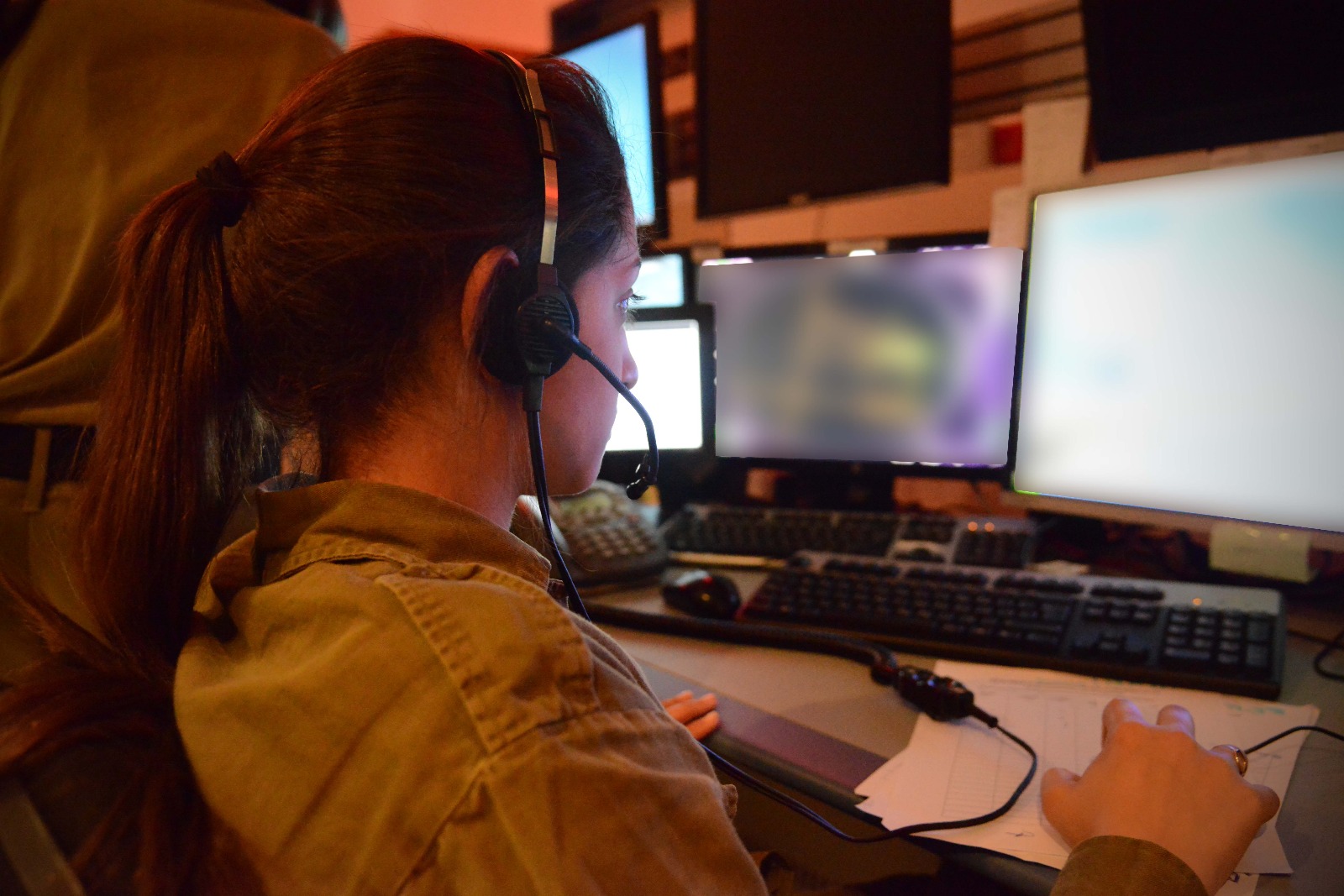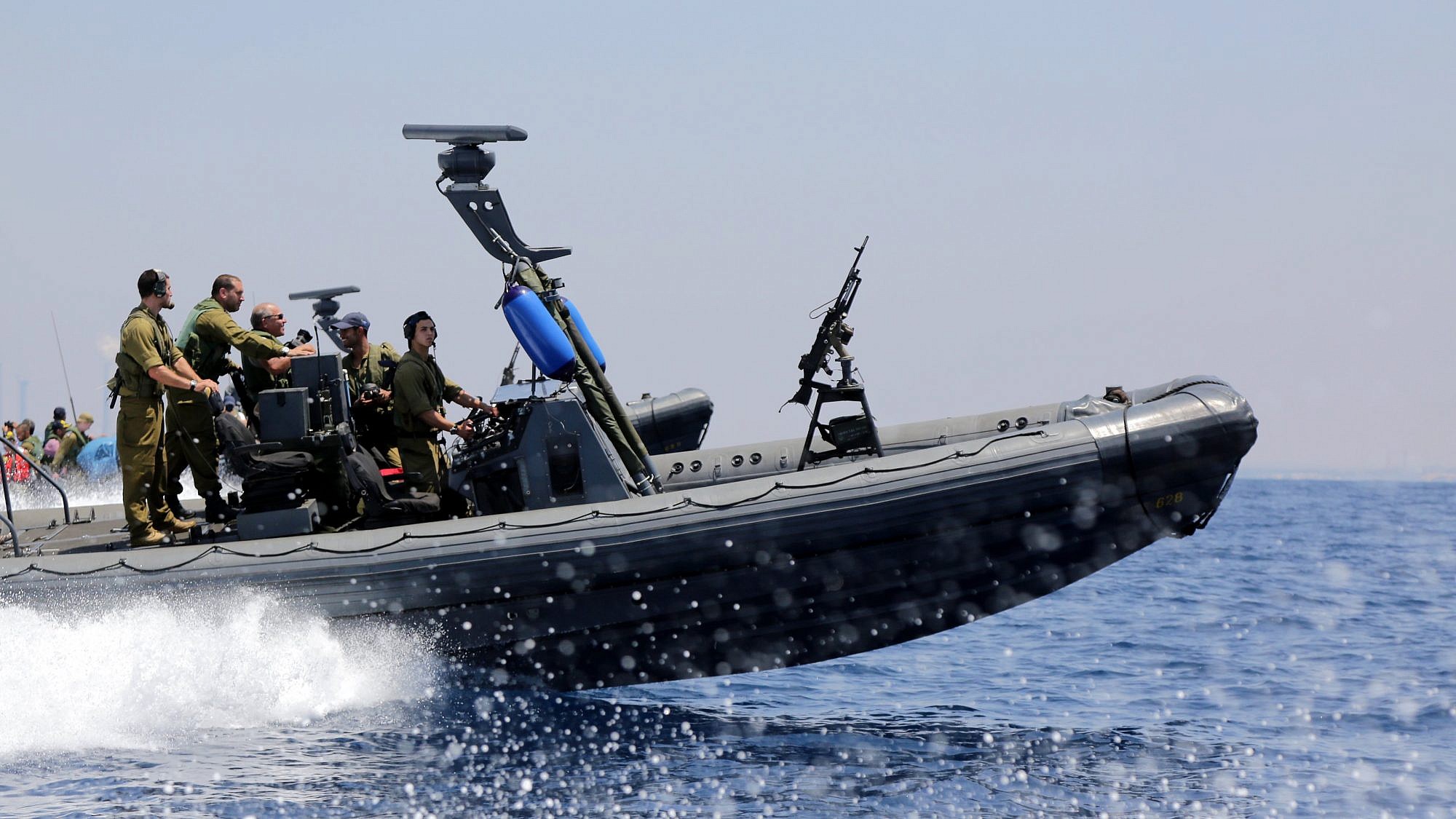Hamas’s military wing in Gaza increasingly finds itself blocked off by Israel on land, underground and in the air. As a result, it appears to be making a greater effort to develop its abilities to infiltrate Israel for armed attacks via the sea.
Israel Navy officers have told JNS in recent days that they are monitoring such efforts and doing what is necessary to stay ahead of Hamas’s naval force build-up program.
At the Israel Navy Erez Arena Control Center just north of the Gaza Strip, officers and soldiers turn an array of high-tech sensors in the direction of Gaza, aware that any blind spot could end up carrying a heavy price tag for the Israeli civilian communities all around them that they protect.
A mere five kilometers separate Gaza’s northern urban neighborhoods—filled with Hamas military-wing operatives and weapons—from the coastal Israeli city of Ashkelon, as well as its power plant, which is considered a critical national site.
Out at sea to the west are the Tetris and Tamar offshore gas-drilling rigs—part of an increasingly important national energy asset and potential targets for Hamas.
Hamas continues to manufacture rockets, bomb-filled boats with which to “swarm” targets, and according to international media reports, its engineers have even attempted to build unmanned submarines.
‘We are continuously improving, becoming more efficient’
Standing on top of a towering observation post, with the buildings of northern Gaza behind him and Israeli communities to his right, Maj. Liran Blander, commander of the Control Division in the Navy’s Southern Naval Arena, told JNS about how his forces were keeping Hamas at bay.

“A control division is entrusted with building up a naval picture of what is taking place on a number of levels. This includes monitoring what is above the surface—what vessels are in the area—and underwater,” said Blander. Cutting-edge cameras, radars and sonar sensors feed naval control rooms, staffed 24 hours a day by the mostly female control supervisors, who can hardly so much as blink as they watch the feeds on their screens.
The Navy has divided the Israeli coastline into two main sectors: northern and southern. The southern sector is itself divided into sub-sectors, with the Erez military facility responsible for securing the whole of the Gazan coastline, as well as all sea traffic that is within 40 nautical miles from land.
“Our detection is part of a wider naval combat effort, whether it is against Hamas’s sea tunnels or tunnels in general,” said Blander. “I think the enemy is continuing to advance and improve, just as the IDF is determined to stay a step ahead. And I think some of the enemy’s insights are based on the idea that the naval arena is something to invest in. Therefore, we are continuously improving, becoming more efficient and finding new ways of dealing with this, at sea, from the air and on the ground.”
As he scanned the ground far below him, the major noted that “the distances here are very short. There is Zikim Beach, which during the summer months is like any other beach in the country.”
But in 2014, during a 51-day armed conflict, the beach was the scene of a Hamas commando-cell attack, which was foiled when the terrorists were detected by naval-command-post supervisors and fired upon. As part of lessons learned from that incident, the Defense Ministry has begun constructing a new coastal barrier structure. Tractors could be seen in the distance conducting the first building works.
‘The eyes of the country’
Ultimately, however, the most important link in the chain of security defending the Israeli coastline, according to Blander, are the tireless control supervisors who must spend six hours a day glued to radar and camera screens, and dispatch alerts to naval forces, if necessary.
“They are the eyes of the country. It’s not just a slogan,” he said. “They can’t shut their eyes for even a moment.”
He added that “we check ourselves through trials, training and surprise drills because we understand the enemy is making progress. Our cooperation with the defense industries enables us to stay a step ahead.”
Despite all of the technology, he said, “there is no substitute for the human element.”
The personnel at the Erez military facility deal constantly with new alerts and developments. A week ago, the area came under enemy mortar fire from Gaza during a security escalation. In recent days, the teams had to deal with a Hamas provocation in the form of a “flotilla” heading out from Gaza to challenge Israel’s security naval blockade.
Blander added that Palestinian Islamic Jihad had also been planning to conduct a sea-based terrorist attack with bomb-rigged vessels. “Due to intelligence and prior preparation, we reached them ahead of time and arrested them at sea,” he said. In addition, Hamas is trying to use the sea route to smuggle weapons from the Sinai Peninsula into Gaza—trafficking runs that the Navy intercepts on a regular basis.
“The naval supervisors work quietly, modestly and far from spotlight. It’s not glamorous. It’s not at the center of media attention. But they go home to proud families. I can say that I am proud,” said Blander. “Everyone in the Navy who understands what they do is proud of them.”
‘We don’t have the privilege of getting it wrong’
Maj. Adam Ben has been the commander of the Erez Post for the past 10 months. “The culture is here about inquiring and learning lessons,” he told JNS. He described the 2014 attempted Hamas beach landing “as a scenario that we could meet in future conflicts.”
Part of the successful formula of dealing with this challenge, he said, was for the Navy to integrate closely with the IDF ground forces protecting the area.
He spoke of two working assumptions underlying the post’s critical work. “We assume that we are better; we don’t have the privilege of getting it wrong. Like every operational unit, the cost of a mistake is not something we can afford. Secondly, we must not trivialize the capabilities of the other sides—its motivation, its ability to be creative and to learn its own lessons,” he said.
Another key aspect for military success under such challenging circumstances, according to Ben, is to create the right type of resilience and motivation among the mandatory service soldiers stationed here.
Daily interactions between the naval command supervisors and their commanders involve commanding officers being attentive to the personal needs of their subordinates and supporting them. “On the other hand, the tradeoff is that they are here when they’re needed,” he said.
This approach proved itself last week when one squad of supervisors, which was away on an educational visit, heard about the mortar attack on the Erez facility. “The team on the bus asked to come back. It wanted to be where the action was. For me, this was an understanding that as a commander, I have reached the destination I wanted to be at,” said Ben.
That dedication and motivation will be vital as Hamas continues to explore new ways to develop its sea-based attack capability. “We are obligated to prepare for this change,” said Ben. “We understand that this motivation exists [among Hamas]. If not on land, then underground. If that doesn’t work, then projectiles and explosive kites. If that doesn’t work, then the sea, where there the threat we are dealing with is evolving,” he said, describing Hamas’s pattern of operation.
Throughout this ongoing arms race, the task of creating the right type of resilience and motivation among the mandatory-service soldiers stationed here remains a top priority, said the commander.
“My main message as commander of a post this size is that there is no disconnect between dealing holistically with individual [soldiers] and the return we as commanders, the IDF and the State of Israel will receive from soldiers on the edge,” he argued.
Tomer (full name withheld), an officer in charge of shifts in the command room where the supervisors work, described their mission as “difficult, Sisyphean work, 24-7,” yet “very interesting work.”
Chen, a shift leader, talked about the friendships that develop among the supervisors. “I have 11 girls to talk to here. Even if you’re sitting for six hours, no matter how long it is, you’re with your friends. This is how to get to know people the best. It’s a wonderful thing in my eyes.”
Ariel, a second-shift leader, illustrated a rapid switch from casual chatter among the supervisors to suddenly dealing with an incident underway.
“The transition is very fast,” she said. “When that happens, the room falls quiet. We do what needs to be done.”


























